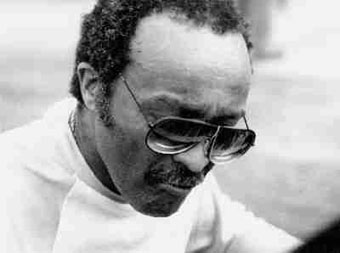 |
| Saxophonist De'Sean Jones |
I met the jazz saxophone player De’Sean Jones in
2004. Back then, Jones was 14, and a new member of the Detroit Symphony Orchestra’s Civic
jazz program. I was assigned to interview the program's director bass player Rodney Whitaker for a story in the weekly newspaper the Metrotimes. Whitaker was running
late for the interview. To kill time, I waited in a rehearsal room as his students
prepared for their weekly session.
Jones struck up a conversation with me, talking excitedly about being a member of Civic Jazz, and listing all the jazz tenor
sax players his dad had turned him on to. For a teen, Jones was scary smart. I liked him immediately. I laughed when Jones said if he has kids, he was going to make sure they're jazz musicians. I never seen a teen that idealistic and focused. After Whitaker finally arrived and the weekly
session began, I was awed by how mature Jones sounded on the tenor.
Two years, after we met, I saw Jones at the
Detroit Jazz Festival with his tenor in tow. Jones wasn’t scheduled to perform, but that didn't deter him from playing. He walked through the crowd playing like he was a featured act at the festival. The following year, Jones was at the fest playing in the Gerald Wilson Big Band. Backstage minutes before Jones hit the stage, I pulled Jones aside. I assured him in the coming years he’d a big success.
Jones is 25 now with a wife and a baby boy. He’s toured with Stevie Wonder, and he
performed overseas with the jazz and techno group Underground Resistance. When Jones
was on leave from that group, he toured and recorded with his septet.
It’s been a few years since I’ve heard Jones live. I attended the opening night of his four night engagement at the Dirty Dog Jazz Cafe in suburban Detroit. I
heard Jones was heavily into experimental forms of music. That didn’t
surprise me. Many jazz musicians of Jones’ generation are experimenting.
The Dirty Dog caters to a conservative crowd. So, I wondered if Jones brand of jazz would appeal to such a crowd. It was the first
time Jones led a band at the Dirty Dog. A few years ago, he played there in Marcus Belgrave’s band.
Wednesday night, was the opening of Jones’ four night run, and the first televised game of World Series Tigers vs. the Giants, which could be a reason for the small turn out at the Dirty Dog. That didn't mess with Jones’ head. Jones treated the gig as though it was a blessing. Instead of his usual septet, Jones gave his regular’s guitar player Conrad Reeves, vibe player Chase Jackson, and piano player Shea Pierre some time off.
Wednesday night, was the opening of Jones’ four night run, and the first televised game of World Series Tigers vs. the Giants, which could be a reason for the small turn out at the Dirty Dog. That didn't mess with Jones’ head. Jones treated the gig as though it was a blessing. Instead of his usual septet, Jones gave his regular’s guitar player Conrad Reeves, vibe player Chase Jackson, and piano player Shea Pierre some time off.
Mike Jellick, a first-call piano player and arranger
in Detroit subbed for Pierre. Jones played his tunes and one standard “April in
Paris”. His tunes “Invocation,” “Lost-N-You,” and “Solomon Da’Wise” was borderline
free-jazz and danceable.
Because of the small turn out, it’s unknown if the Dirty Dog regulars would've cottoned to Jones' free-jazz friendly and boogie driven music. Nevertheless, his quintet was on point, especially trumpeter Aaron Janik and drummer Zaire Darden. Janik's trumpeting was earthshaking, and Darden's drumming called to mind Detroiter Karriem Riggins.
Because of the small turn out, it’s unknown if the Dirty Dog regulars would've cottoned to Jones' free-jazz friendly and boogie driven music. Nevertheless, his quintet was on point, especially trumpeter Aaron Janik and drummer Zaire Darden. Janik's trumpeting was earthshaking, and Darden's drumming called to mind Detroiter Karriem Riggins.
A lot of tenor players of Jones' generation influences
are obvious. But it's nearly impossible to tell which tenor sax players Jones idolized, but if I had to make an educated guess I’d say James Carter and the late Donald Walden were Jones' idols.
Jones’ quintet was commanding, but sadly only a handful of people were there to experience it, but there's no need to fret. There's a silver lining. Jones’ quintet will perform again at the Dirty Dog Thursday, Friday, and Saturday.
Jones’ quintet was commanding, but sadly only a handful of people were there to experience it, but there's no need to fret. There's a silver lining. Jones’ quintet will perform again at the Dirty Dog Thursday, Friday, and Saturday.









